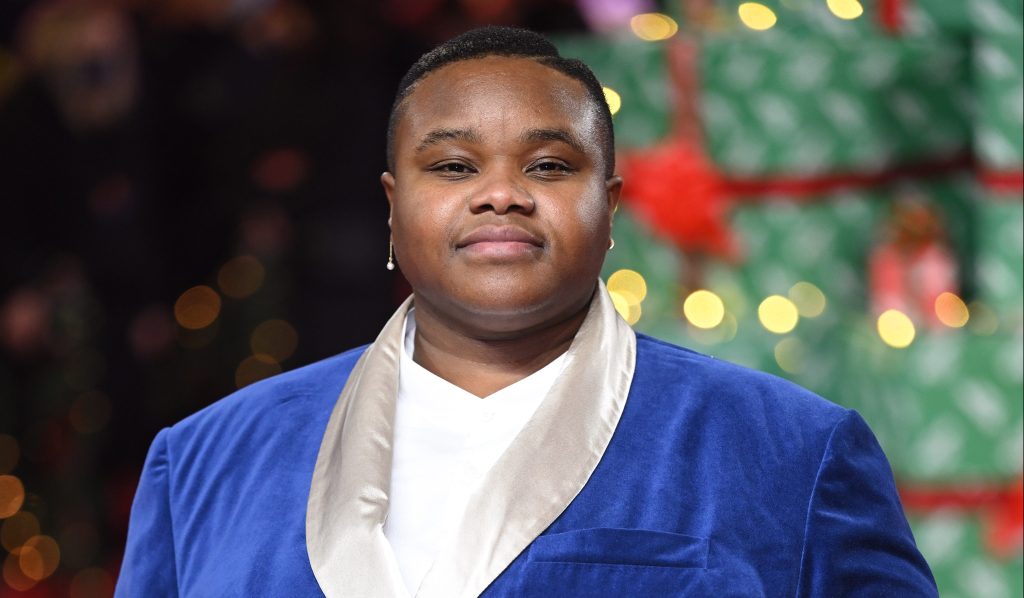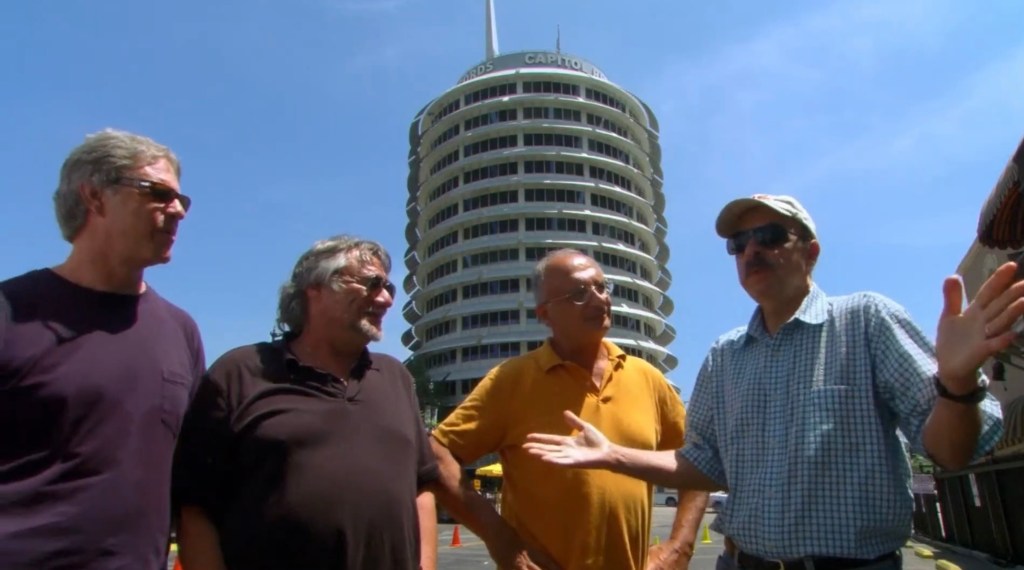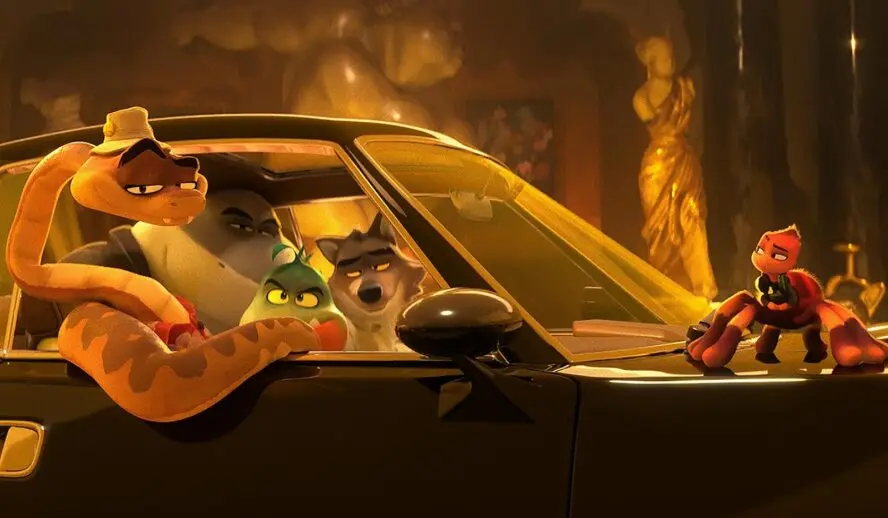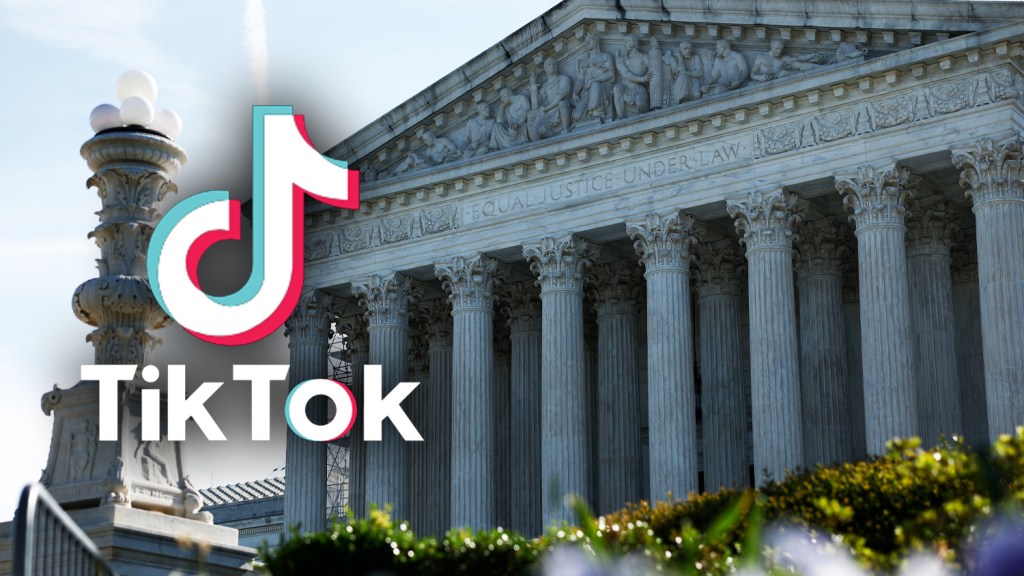EXCLUSIVE: There’s been a lot of buzz in the UK surrounding rising producer Joy Gharoro-Akpojotor.
With intriguing credits like Blue Story and Boxing Day, Gharoro-Akpojotor has demonstrated a unique ability to get projects that are subversive in both content and creation — everything she’s produced so far has boasted a majority non-white cast — over the line and onto our screens at a time when commissioners are more risk-averse, and budgets are much tighter.
The Nigerian-raised Londoner is at the Berlinale this year with a new project, her directorial debut. Titled Dreamers, Gharoro-Akpojotor directed the film from a screenplay she wrote. The film follows Nigerian-born Isio, who, after living undocumented in the UK for two years, is caught and sent to the Hatchworth Removal Centre. She hopes for a fair asylum hearing and is convinced that, as long as she strictly follows the rules, she will be released – even if her charismatic new roommate, Farah, tells her this is a naive mistake.
As Isio adjusts to life in the Removal Centre, she finds herself falling for Farah, as well as becoming close to her new friends Nana and Atefeh. When Isio’s asylum application is rejected, Farah suggests they escape together to give their love a chance. Isio initially refuses. But when events beyond their control threaten the promise of a new life, she realizes that she has to start playing by her own rules.
Speaking with us a few days before her debut screening in Berlin, Gharoro-Akpojotor said the film’s story was inspired by her own experience going through the asylum process in the UK.
“It was only after therapy and being able to dissect what happened to me that I could really write and dig into the experience,” she said.
Emily Morgan (I Am Not a Witch) produced the film, which runs a tight 78 minutes. The cast features young Brits Ronkę Adékoluęjo, Ann Akinjirin, Diana Yekinni, Aiysha Hart, and Harriet Webb. Gharoro-Akpojotor is an EP alongside Claudia Yusef (Ali and Ava), Amy Gardner (The End), and Doris Gharoro. The Yellow Affair is selling the film internationally.
Below, Gharoro-Akpojotor shares more about how her own experiences shaped her debut feature, developing the film with the BFI before moving over to BBC Film, and how the experience of Blue Story being pulled from cinemas in 2019 has boosted her desire to tell a “wide range of Black, Queer, and female stories.”
“It’s needed and important. People need to see themselves,” Gharoro-Akpojotor said.
You can also watch a clip from the film above.
DEADLINE: Joy, I know you as a producer. Can you tell me a little about how you’ve ended up here today?
JOY GHARORO-AKPOJOTOR: Growing up, I loved to write. I would make mini books and stories. When I was back in Nigeria, my English teacher would say to my mum, ‘Oh, God, your daughter’s going to be a novelist.’ My mother would respond, ‘No, she’s not. That doesn’t make any money. She’s got to be something else.’ When I came to the UK, they used to have this scheme called Orange Wednesdays, where you could go to the cinema with a discounted ticket. I would watch three or four movies, which you weren’t supposed to do. But I fell in love with the art of cinema. That’s when I knew I wanted to become a filmmaker. I ended up doing a course in film studies. That’s when I realized I wanted to be a writer. But I couldn’t find any producers to make my work because I wanted to make projects that were Queer and Black. I didn’t even really know where to look, so I figured I should also become a producer. I taught myself the job. I read a bunch of books. I remember reading Christine Vachon’s A Killer Life because I didn’t really understand what a producer was.
DEADLINE: You grew up in Nigeria?
GHARORO-AKPOJOTOR: Yeah, I grew up in Nigeria and Brunei. I did my boarding school years in Nigeria. I have four older brothers. Three of them were in the UK. Me and one of my brothers were sent back to Nigeria, and we joke that it was because the other ones didn’t turn out right.
DEADLINE: When did you start working on Dreamers? What inspired the work?
GHARORO-AKPOJOTOR: I started in 2016 when I got BFI money to develop the idea. But I had the initial idea around 2011 or 12 when I was working through my own asylum process. I wrote a first draft of the script based on my own experience. I was pitching the idea, and then someone told me it was a great idea, but I should work on it some more. Some time passed, and I was thinking about what kind of filmmaker I wanted to be, so I returned to the story and began to rewrite it. This was around 2016. But it changed a lot, mostly because I had to deal with my own experience of asylum and immigration. It was only after therapy and being able to dissect what happened to me that I could really write and dig into the experience.
DEADLINE: It’s funny you talk about your own self-discovery, but just in the time span of you working on the film, the discussion about immigration and asylum has changed so much. It feels like a fitting time for the film to be seen.
GHARORO-AKPOJOTOR: Yeah, it’s a broken system run by individuals, and individuals are flawed. Within the film, it’s more about the character finding freedom of mind, even though, physically, she’s not free. But I think once you have freedom of mind, there’s a space for you to manifest for physical freedom. I was thinking a lot about how those who don’t see themselves as immigrants often engage with those who are immigrants in a way that always collectivizes immigrants. If society had a different understanding of what it means to be an immigrant, then there would be a chance for us to change things. Over the years, just look at the media and how people view immigration and what’s happening across the world. There’s always been this sort of negativity about immigrants, but we forget to look at the reasons why it is happening. We forget that nobody willingly gets on a boat to leave their entire life. There’s a reason behind that. But when immigration is so collectivized, it’s easy to speak about immigrants as ‘those people over there.’ But when it’s someone you know, it becomes a harder conversation to have.
DEADLINE: How was the process of making the film?
GHARORO-AKPOJOTOR: It wasn’t the easiest film to make, in all honesty. On paper, the film isn’t commercial. We’ve had a fair few immigration films, and I think people always see it as just another one. I was clear from the start that I wanted the film to be a love story that just happens to be within a removal center because it’s about people who are displaced. We were at the BFI for a long time developing, but then, unfortunately, we were unable to move forward with them for production. But the BBC was amazing. They came on board and helped us out. We had two other partners. We didn’t have a lot of money, but we had a lot of love for the project.
DEADLINE: Why didn’t you move into production at the BFI?
GHARORO-AKPOJOTOR: Their process has changed recently, so I can’t speak to why not. They have a much more rigorous application system. It could be for any number of reasons, but I’m grateful for the development money we had from them, and as a producer, I’m happily working with them on my other projects. It was nothing personal. It’s just the competition in the funding process.
DEADLINE: Why do you say the film isn’t commercial?
GHARORO-AKPOJOTOR: The reason I said it’s not commercial is more because people thought it wasn’t commercial. I think there is a space for this film, especially within queer audiences and also people who like political films. It’s not a film that is solely political it’s also a love story. If I look at the lack of queer cinema or lesbian cinema that we’ve had, I think there’s completely a gap. I look at things like Bottoms and how well that did when it came out. People look at these films and don’t see the value, which is wrong because there is a lot of space for this work. I look at the past five years, how many films center on a Black lesbian couple out of the UK. Or from the international industry. I struggle to think about what that number is.
DEADLINE: Speaking about international, how are you feeling about debuting the film in Berlin?
GHARORO-AKPOJOTOR: I’m excited but also nervous. The thing about transitioning from a producer to a director is that suddenly you’re front-facing. You can’t just hide in the background. I’m not used to it, but I’m looking forward to hearing what audiences think about the film. For me, what’s important about this film is creating dialog. I think art is about challenging people and communication, which is why Berlin felt like the right place because it’s such an open political platform.
DEADLINE: What would be your ideal release for this film? And where do you think it will realistically end up?
GHARORO-AKPOJOTOR: If it was up to me, we would be in 400+ cinemas. I would love something like the Moonlight effect, where it starts out small, but then more people see it, and it gains traction.
DEADLINE: Looking back at the Blue Story controversy. What do you think about how that unraveled? It’s crazy to think a film was pulled from cinemas.
GHARORO-AKPOJOTOR: It reminded us of the need to have a diverse cinema. When it came out, it was showing people themselves on screen, and there had just been such a lack of that up to that point. People told me they went to see the film seven times, which is so crazy. But it was because there was such a hunger. And that experience has spurned my commitment to telling a wide range of Black, Queer, and female stories because it’s needed and important. People need to see themselves.
DEADLINE: I remember reading that you signed with CAA. Are you tempted by Hollywood? I’m sure lots of people are knocking on your door now.
GHARORO-AKPOJOTOR: I think everybody wants to work in Hollywood at some point. For me, it’s really about the story and the people I’m working with. As a storyteller, I’m finding my voice. I know the kind of storyteller I’m not. And I know who I want to be, so if the right project turns up, then sure, why not?
DEADLINE: What kind of filmmaker do you want to be?
GHARORO-AKPOJOTOR: I love poetry in the sense that I hope people watch the film and can see the poetry in it. I think that’s my happy place.



